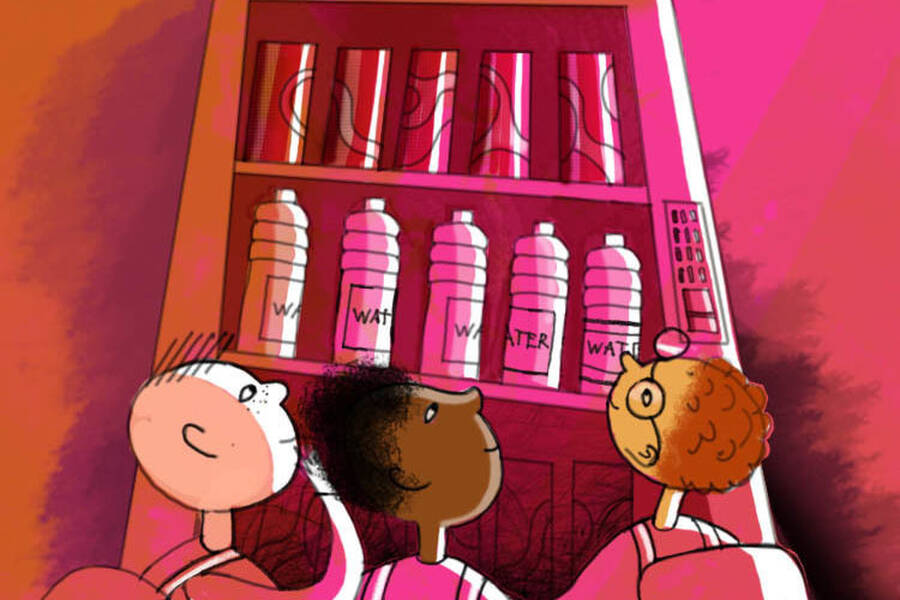Marketing Jun 1, 2020
A New System for Getting Your Kids to Eat Healthier Foods
They tend to prefer variety. Here’s how to use that instinct to get more fruits and veggies on their plates.

Yevgenia Nayberg
This situation likely sounds familiar to parents: You want your child to eat a healthy array of fruits and vegetables. But your kid is more interested in crackers, chips, and other processed snacks. So you find yourself disguising grated veggies in baked treats, or artfully arranging fruits in rainbows.
Now Michal Maimaran, a research associate professor of marketing at Kellogg, and her colleagues have hit upon a new technique that parents can add to their toolbox.
The researchers found that if kids didn’t already have strong preferences for the foods being offered, they often chose to try a couple of different options rather than just one. And children tended to pick a wider variety of options, including more fruit, when asked to select all their snacks for the week ahead of time, compared to when choosing one each day.
The study suggests that for younger kids who haven’t yet formed preferences, parents can encourage them to explore different foods by presenting multiple options, Maimaran says. If the kid already has definite likes and dislikes, having them choose a series of snacks all at once might help get them out of food ruts.
“We can move them toward the healthier options,” Maimaran says.
Carrots, Broccoli, or Both?
Getting kids to eat nutritious food is critical in laying the groundwork for a healthy lifestyle later in life. It also helps lower their risk of diabetes and obesity, both today and later in life. “It’s so important for their health and for their growth and for their future habits,” Maimaran says.
Maimaran’s previous work has explored various strategies for encouraging healthy eating, finding some strategies to be helpful—but others ineffective, or worse.
One study revealed that when kids were told that a healthy food such as carrots was scarce, they tended to eat more of it. But in another study, implying that a certain food would make kids healthier or better at schoolwork backfired; the children ate less of that food than kids who didn’t receive those messages.
Maimaran wondered if focusing on the desire for variety could be also used as a tool.
Many studies have looked at variety-seeking in adults; for example, two studies found that people tended to mix up their song choices even if that meant listening to songs they didn’t like as much. And Maimaran’s collaborators, Margaret Echelbarger at the University of Chicago and Susan Gelman at the University of Michigan, found that children seemed to prefer variety among objects. When they presented kids with pictures of unfamiliar items, the children were more likely to choose two different objects than two of the same type.
Would that same tendency manifest in food choices?
To find out, Maimaran and her collaborators recruited 120 children, ranging from 4 to 9 years old. Each kid went through a series of exercises on a computer. In each exercise, a pair of foods was shown on the screen—for example, a carrot and broccoli. First, the child answered the question “Which do you like better: carrots, broccoli, or are they about the same?” Next, they were asked if they would like to have two carrots, two pieces of broccoli, or one of each.
If a kid hasn’t yet formed preferences, Maimaran suggests presenting options to encourage more exploration.
This exercise was performed for six different pairs of foods. Some were healthier than others, but both foods in a pair contained similarly healthy or unhealthy items—such as two types of crackers or two sweets.
The researchers wanted to know: in the absence of a strong preference for one of the two foods, would a desire for variety encourage participants to choose one of each.
Encouraging Exploration
This is indeed what they found. Kids were more likely to opt for one of each item if they didn’t already like one food better than the other. So if children are still exploring foods and don’t have strong likes and dislikes, “this is when variety is more likely to kick in,” Maimaran says.
But what happens when kids are given a choice between, say, a fruit and a processed snack? Would they still pick variety, meaning they’d end up with one of the healthy options on their plate?
To find out, the researchers conducted the same experiment with a slight modification. This time, each pair contained one nutritious and one neutral or unhealthy item.
Among 6 to 9 year olds, the general pattern was similar to that in the first study. In the trials where kids didn’t have a preference, they were more likely to choose variety. But surprisingly, the trend was different in 4 to 5 year olds. Their tendency to pick two different items was about the same regardless of whether they initially had said they liked one better.
Preferences might matter less for younger kids, Maimaran speculates, because they might not feel as strongly about their likes and dislikes. “There is more room to possibly make a difference in the choices they make,” she says.
Filling Their Baskets
But how can parents get their kids to choose variety when they do have a preference? After all, many children decide early on that they like animal crackers better than apples, or chips better than broccoli.
The researchers designed another study where kids chose real foods that they would actually get to eat later. The team set up a study at a preschool and an after-school program in Evanston. They recruited 91 kids, aged 4 to 9, and split them into two groups—pick-at-once and daily-pick.
The team visited the pick-at-once group on a Monday and presented each child with a series of five trays. Each tray contained the same six items: an apple, a banana, an orange, Cheez-Its, Goldfish, and Wheat Thins crackers. The child was asked to choose a snack for each day of the week, selecting Monday’s snack from the first tray, Tuesday’s from the second, etc.—meaning they could pick the same snack for all five days if they wanted.
The team visited the children in the daily-pick group every day from Monday to Friday. Each day, they went through the same exercise, except that the kid chose their snack only for that day.
Children who were asked to select a week’s worth of snacks at once chose an average of 4.16 different types of food. But those in the group that chose snacks daily picked an average of only 3.19 different foods.
And when the team zeroed in on the subset of kids who chose the most variety, they found a big gap between the two groups. Almost half the kids in the pick-at-once group selected a different item for every day of the week, compared to only 9 percent of those who chose daily.
And, importantly, the inclination toward variety also nudged children toward healthier choices. Kids in the pick-at-once group picked an average of 1.87 fruits, while those who chose daily averaged only 1.08 fruits.
A Toolbox for Parents
What should parents take away from the study?
If a kid hasn’t yet formed preferences, Maimaran suggests presenting options to encourage more exploration.
If your child already loves Cheez-Its and disdains fruit, you can ask them to pick their snacks for the week ahead of time, perhaps presenting some foods the kid definitely likes and some that the parent wants them to try. “You still give them a choice,” Maimaran says. “But you steer it in a direction that is more favorable to you as a parent.”
Of course, it’s not feasible to offer choices for every meal and snack. “It would be exhausting, for parents and children,” she says. But parents could try the strategy for, say, afternoon snack.
Maimaran acknowledges that many parents face hurdles other than persuading kids. Healthy food tends to be more expensive and takes more time to prepare. If a harried parent has a choice between giving their hungry kid a bag of chips or washing, peeling, and chopping veggies, it’s much easier to give the bag of chips.
And in the current pandemic, when grocery shopping is more difficult and some items are out of stock, “maybe you cannot encourage your kids to choose variety during these times,” Maimaran says. “You just want them to eat whatever you’re able to get.”





